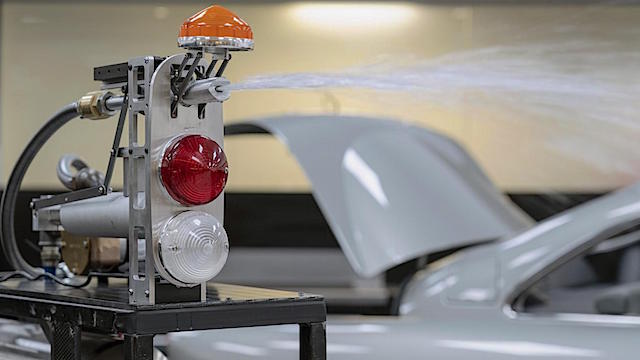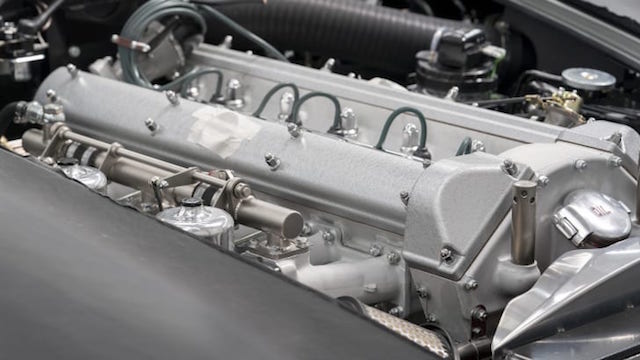
British brand Aston Martin may be deep in the red but it’s driving ahead with its multi-million dollar DB5 Continuation project, a recreation of the iconic car driven by James Bond in the film 1964 Goldfinger.
The limited run of 25 cars is being built, exact replicas of the DB5 used by secret agent 007 in the third Bond movie. Aston Martin says it will begin deliveries of the first of the cars within the next few months.
Each handbuilt Goldfinger DB5 will cost NZ$5.5 million and, in the words of project boss Paul Spires, be “one of the most desirable toys ever built for 25 lucky buyers worldwide.”
But they can only be driven on private roads – they don’t meet modern safety standards for use on public roads. The project is overseen by special effects expert Chris Corbould, who has worked on many Bond films. It took 4500 hours of labour to build each car.
The cars will of course be equipped with mock examples of the signature Bond self-defence gadgets – among them a rear smoke screen, oil slick dispenser, revolving number plates, twin machineguns, bullet-proof rear shield, tyre slashers, battering rams, and removable passenger seat roof panel.
Inside, the DB5 gets a radar system, telephone, switches on the gear knob, armrest and centre console to arm the gadgets, and a remote control to activate them..
The original DB5 was built between 1963 and 1965. The DB5 Continuation cars are true to form, down to the silver birch exterior paint job.
But, says Aston Martin, they have received “sympathetic application of modern engineering advancements and performance enhancements”.
Mild steel is used for the chassis with exterior panels crafted from aluminium. A naturally aspirated 4.0-litre sraight-six cyclinder engine with triple carburetters sends roughly 216kW to the rear wheels via a five-speed manual transmission and mechanical limited-slip differential.
The new DB5s ride on a coil over spring and damper front suspension, with a live axle rear setup – true to the original car. Steering is not power-assisted.
Says Aston Martin heritage manager Clive Wilson: “Obviously we have not, as a business, made a new DB5 for more than 50 years, so to be involved in the building of these cars, which will go on to form part of Aston Martin’s history, is something I’m sure all of us will be telling our grandkids about.”
- Shares in Aston Martin have collapsed by 98 per cent since it floated on the stock exchange less than two years ago, down from around NZ$38 a share in October 2018 to NZ$0.70 cents today. Its market value is now NZ$1.3 billion compared with more than NZ$8 billion on floatation.





